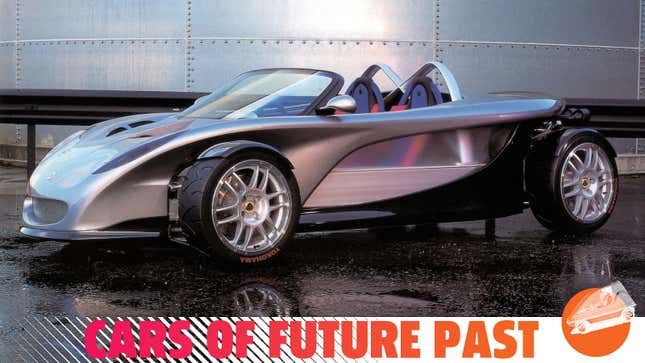
Welcome to another installment of Cars Of Future Past, a series at Jalopnik where we flip through the pages of history to explore long-forgotten concepts and how they had a hand in shaping the cars we know today.
Whether Lotus will finally emerge viable and stable under Geely’s stewardship remains to be seen, although the brand will certainly tell you it already has. For those of us on the outside, the proof will come in the products. And if one thing’s for certain, the products to come out of Lotus in the next 20 years are certain to look nothing like those of the last 20.
It’s interesting to reflect on, because two decades ago things were actually looking really promising for Lotus. The Elise S1 proved a hit upon release five years earlier, returning the marque to relevancy with just the right mix of simplicity, accessibility and appeal. That roadster was later replaced by the second-generation Elise in 2001, a global car. However, in between them both, Hethel treated us to a delightfully unusual thought experiment that nobody dared to dream would see a public road.
What It Was
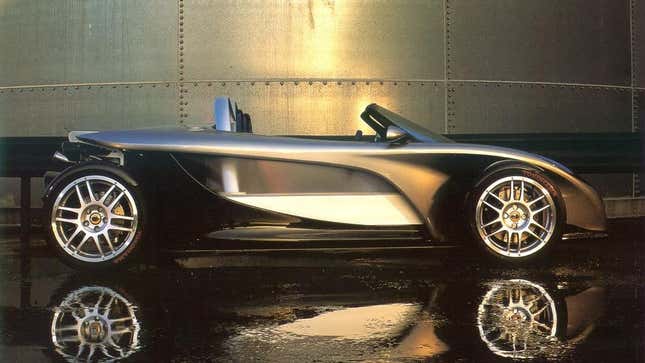
Many of the vehicles discussed in Cars Of Future Past made their whirlwind public debuts at one of the world’s great auto shows. Tokyo, Geneva, Detroit, Turin — you know the type. But the Lotus 340R concept didn’t bow in any of those cities, fighting the latest reveals from Ford, Toyota or Ferrari for eyeballs. No, the public was introduced to the Lotus 340R at the 1998 British Motor Show in Birmingham, England.
The British Motor Show — now the London Motor Show — has operated at a sporadically over the last decade, which I never really thought about until writing this. You’d think such an event would be a perennial staple of the global circuit. Regardless, 23 years ago it proved the perfect launching pad for the 340R, impressing attendees I’d assume because there wasn’t a car that looked anything like it at the time.
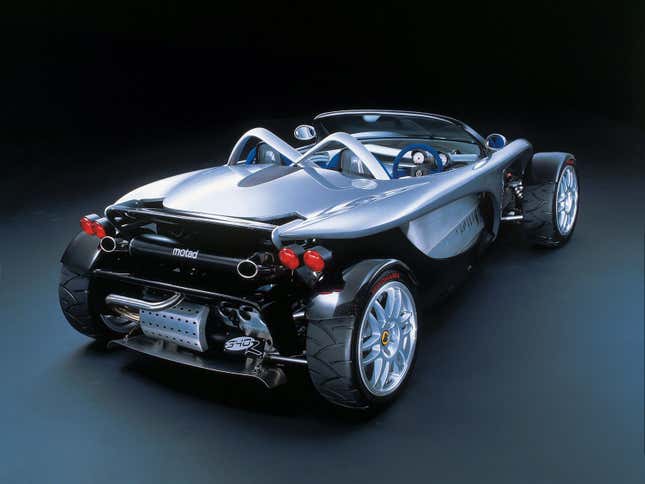
Try to think back to an era before track-bred, skeletal machines like the Ariel Atom, KTM X-Bow and BAC Mono. The 340R was the precursor to all of those, with its pseudo-open wheel design, sparse, compact bodywork and partially-exposed engine, exhaust and transmission. It didn’t have a roof or windows, unless you count the translucent frosted acrylic panels sweeping across its sides. Perhaps the designers of the McLaren Senna looked to their local peers for inspiration.
The idea behind the 340R was to create the most extreme Lotus ever — the lightest, most sprite-like insect of a car with zero consideration for anything secondary to a Lotus’ primary goal, which is to change direction as quickly as possible. At least, that was still Lotus’ M.O. back in 1998.
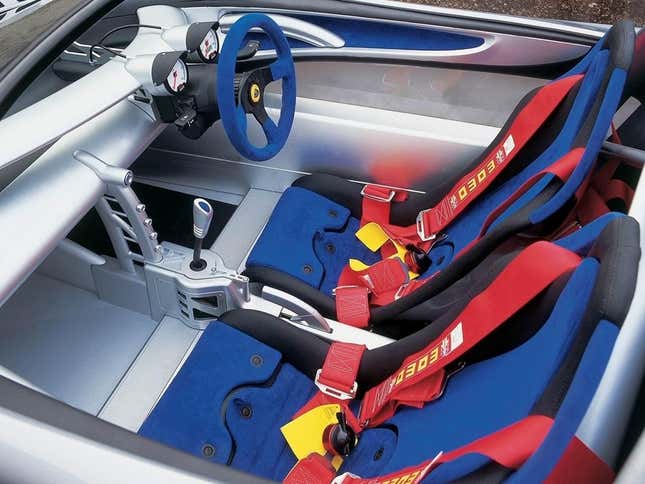
To that end the 340R touted the same stiffer springs and improved dampers out of the Elise Sport 190, the limited-run, optimized version of Lotus’ bread-and-butter sports car. It also inherited the Sport 190's highly-tuned 1.8-liter Rover K-series engine, producing 177 brake horsepower and 126 lb-ft of torque. Add in ultra-sticky Yokohama tires specifically commissioned for the 340R, and there was no doubt this one-off Lotus had the hardware to realize its ambition.
We haven’t even discussed Lotus’ radical weight savings yet, visible in all the bodywork you’re not seeing. That was good for a curb weight of 1,485 pound or about 150 pounds less than your typical Elise S1. A notable margin, considering the all-aluminum Elise had a wealth of fat to trim to begin with.
Why It Matters
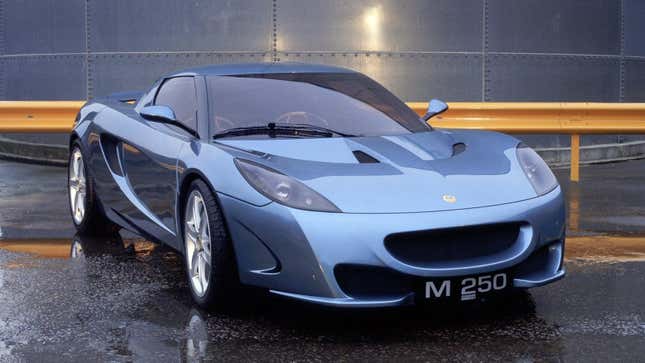
The 340R ended up being quite an influential project for Lotus over the following decade. Two years after it wowed Birmingham, Lotus introduced another concept called the Project M250.
Sat between the entry-level Elise and the Series 4 Esprit, which was still on sale at the time, the M250 was basically the first pitch for the Evora before anyone knew what an Evora was. And it borrowed several cues from the 340R, particularly in its headlights, pinched nose and boomerang hood vent design. Sure, the M250 had actual bodywork, but the black-painted rear bumper coupled with the coupe’s short overhangs manifested the illusion of negative space, drawing a vague stylistic through-line back to the 340R.
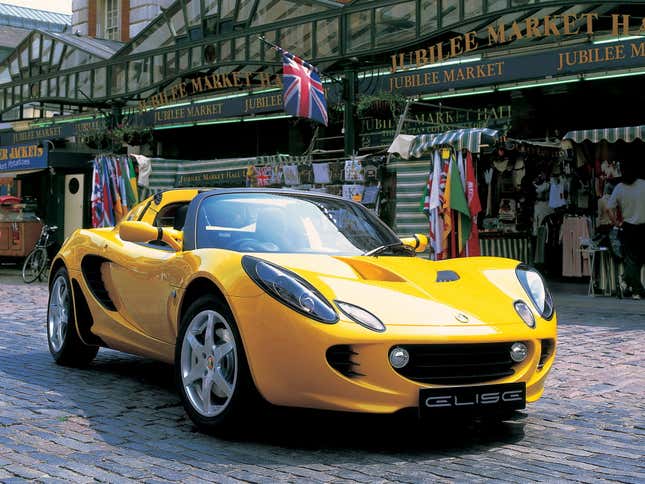
The M250 never went further than that concept. But the Series 2 Elise that entered production in 2001 was even closer in spirit to the 340R — almost like Lotus had taken that earlier concept and extruded what little of the exterior was there to create full fenders, doors and so on. It was the natural, normal evolution of the 340R, right down to its grimacing face and those fog lights placed within the center portion of the grille.
None of this is to say that the 340R is only relevant in light of the cars that followed it. It’s an absurd and thrilling idea by its very nature. And an idea is all it would have ever been, if Lotus didn’t figure out a way to put the dang thing into production.
What Happened To It
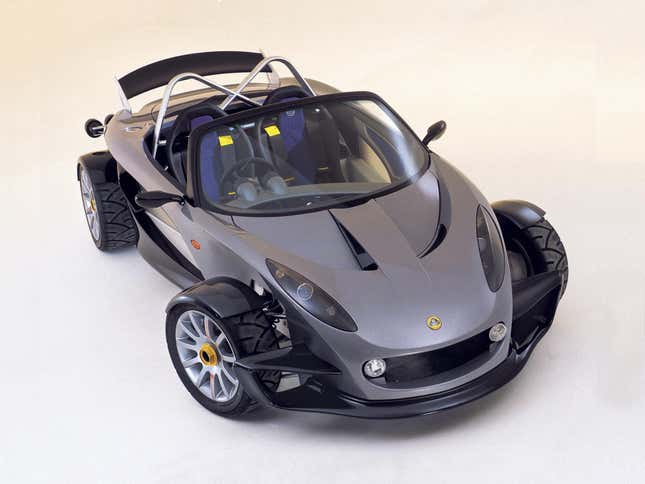
Reception to the 340R was so positive that Lotus set out, against all common sense, to manufacture 340 road-legal examples of the 340R in 2000. I have no idea how a car like this gets certified for public use, but Hethel found a way. In doing so, the company managed to keep the road car remarkably true to the concept, save for some slight changes that actually enhance the car’s appearance like the winglets flanking the grille and the steeper-rake rear wing.
Placing the run at 340 cars seemed inevitable, but it also obscured a mildly embarrassing fact about the 340R’s name. The inspiration for the moniker was Lotus’ objective to reach 340 brake horsepower per ton. As our very own Raph pointed out a few years ago, 177 BHP over 1,485 pounds does not work out to 340 BHP/ton. It’s more like 267 BHP/ton. Lotus apparently built one example that reached that target, though it lacked a passenger seat and various other things the road-legal car required. So it wasn’t sold.
Nevertheless, 267 BHP/ton is still pretty damn sprightly, as the myriad reviews would have told you back in the day. Like this one from Road & Track:
[The 177-BHP inline-four] may not sound like much at first, but factor in the 340R’s scant 1485-lb curb weight, and you have a car whose power-to-weight ratio approaches that of the Ferrari 360 Modena. First gear engages with a delicate snick. The moment you press the throttle pedal, the 340R leaps off the line with alarming intensity. It pulls all the way up to redline with some added emphasis at the top end of the rpm spectrum. Each upshift brings a robust forward surge, accompanied by a deep race-car-like growl.
Or this one from Autocar:
Suspension and tyre choice dominate the way the 340R drives. Take a simple fast right hander and, as you turn in, there is very little roll; but what you really notice is the face-bending level of grip on offer. What’s more, the front and rear spoiler arrangement on the 340R produces a fair amount of downforce, so the tyres get to stick even more stubbornly to the ground at high speed.
And even in production guise, the 340R didn’t have any luggage space, or a roof. It only came in that two-tone, silver-and-black color scheme. It was just as uncompromising as the vision that inspired it. In fact, the 340R’s lunacy only increased in roadgoing guise; while Lotus’ official output number was 177 BHP, these cars left the factory churning more like 187 BHP according to Supercar Nostalgia. Again, still not quite 340 BHP/ton, but still very, very good.
What Games You Can Drive It In
The Lotus 340R always seemed like one of those cars that was made for video games, and fortunately it’s appeared in quite a few. These include Project Gotham Racing 2 and a tremendously off-model example in Lotus Challenge, both of which released in 2003. Before that, it wound up in TOCA World Touring Cars, also known as — and this will always amuse me — Jarrett & Labonte Stock Car Racing in the good old US of A.
But you don’t have to dig up an early-aughts console to drive a 340R, as it’s also made it to three Forza titles over the years: Horizon 3 and 4, as well as Motorsport 7. It’s always nice to see a rare car like this immortalized in a modern racer just for the exquisite level of detail rendered inside and out. It’s the closest most of us will ever get to a 340R, but it’s sure as hell better than nothing.